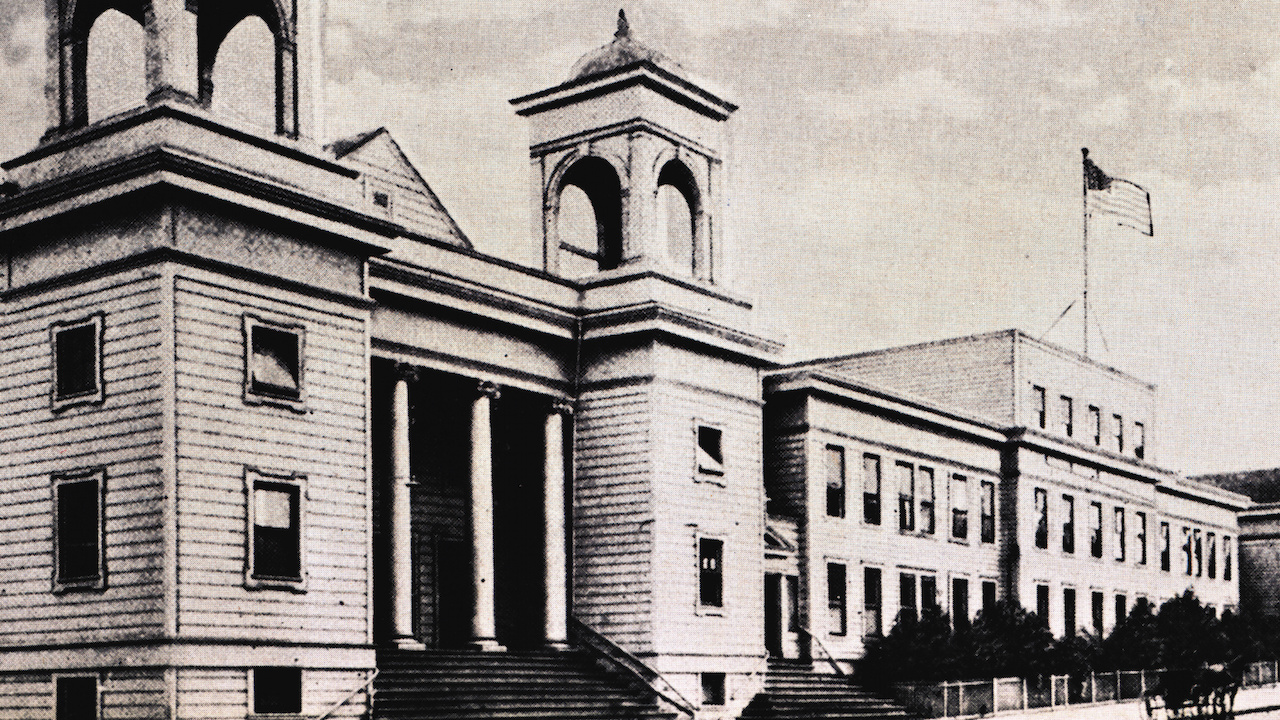-
Dick Hyland ’18 gained fame on America’s last Olympic rugby team
After returning from France, Hyland played football for Stanford, running 48 yards in the first play of the 1926 Big Game against Cal to score a touchdown in his team’s 41–6 victory that day. Photo courtesy Stanford University. By Col. John Scharfen, USMC (Ret) ’43 In 1924, the U.S. won the rugby championship at the…
-
Athletics The Many Leagues of SI
SI’s membership in the various athletic leagues can be a bit confusing. In 1909, SI joined the Catholic Athletic League, and in 1910, the school joined the city’s Academic Athletic League (known from 1914 as the San Francisco Athletic League), which was run by student managers. When the Academic Athletic Association formed in 1926, putting…
-
Academics
Students in 1910–11 took a familiar course of studies that included religion, Latin, Greek, English, German, Spanish, French, mathematics, civics, elocution, freehand and modern drawing, physical geography, astronomy, physiology, botany, zoology, stenography and bookkeeping, taught by 11 priests and three laymen. Admission to the high school seems to have been a rather informal affair. According…
-
School Days
School enrollment increased yearly, climbing from 271 in 1907–08 to 373 the following year and 433 for 1909–1910. The school grew in other ways, too, with the birth of new traditions, the most significant of which, for our concerns, is the first known use of the name “St. Ignatius High School” in the 1909–1910Catalogue. Before…
-
The School Crest and Colors
In 1895, St. Ignatius Chicago used the coat of arms from the House of Loyola to create a college button to commemorate its Silver Jubilee. In the years that followed, other Jesuit schools across the country began using the Loyola crest in their school insignias. SI’s crest, designed by George Lyle ’09 in 1909, includes…
-
A New Site for a New Church
Months earlier, on December 23, 1906, Archbishops Riordan and Montgomery dedicated the 500-seat temporary church, located in the college hall. “We have come today to bless a new church,” said Riordan after blessing the interior walls. “It is not like the old one, spacious and beautiful. St. Ignatius has lost a splendid building, a noble…
-
Two new theories on the naming of the Shirt Factory
The Standard Shirts Factory, pictured here in 1880, stood on Gough Street between Grove and Hayes, just two blocks from St. Ignatius Church and College. Photo courtesy of San Francisco History Center, San Francisco Library. Since the publication of Spiritus Magis, two other theories have emerged as to the origin of the Shirt Factory name.…
-
Rising from the Ashes
We can barely comprehend the feelings of the SI Jesuits as they returned to the ashes of their school once the fire subsided. Imagine them, in their black cassocks, poking through the rubble looking for items they could salvage and grieving over all they had lost. They were able to save vestments, chalices, crucifixes and…
-
The Shirt Factory: 1906-1919

The earthquake and fire may have destroyed the beautiful school, but it would not do the same to the spirit of those who taught and studied there. After the earthquake, SI built a “temporary” campus that would last for 23 years and inaugurated a host of new traditions. The school published its first literary work…
-
PG&E’s Frank Drum helped the city regain power after 1906
Frank Drum’s early investment helped PG&E form, and he served as the utility’s president between 1907 and 1920. An 1881 graduate of St. Ignatius College, Frank G. Drum helped to launch PG&E, proved instrumental in its recovery from the 1906 earthquake and fire and went on to serve its president between 1907 and 1920. Author…
